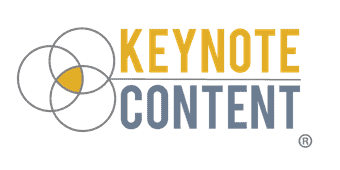“What is content? What are some examples of content?”

When it comes to developing your content marketing strategy, it helps to have a wide variety of content types to share your brand’s message. Content is designed to attract and persuade prospects for future business and educate current clients.
Here are 16 examples of content that can be effectively used for content marketing…
- Blog posts: These are the most concrete examples of content. Blog posts need to be informative, engaging, and easy to consume in 3-5 minutes for the average adult.
- eBooks: Longer form of content used as premium content. If you can create a quality eBook, add it to a landing page on your website with a contact form in exchange for your eBook. This is a great way to start building your email list for future prospects.
- White papers: This is a proof-positive research essay or paper. It uses facts and findings to persuade readers to take an action: buy this product, contract this service, do this, do that, do something! White papers take time to develop, but a well-supported white paper can be a content goldmine.
- Case studies: Industry-specific case studies can be very effective in communicating trends and research to help separate your expertise from the industry pack.
- Email marketing: Email may not be the sexiest form of content, but research shows that email is nearly 40 times more effective at converting new customers than Facebook and Twitter (McKinsey & Co.). Companies such as BombBomb, MailChimp, AWeber, and Constant Contact are known experts in email marketing.
- Comparisons: Diesel vs. unleaded, Coke vs. Pepsi, your product or service vs. your competition’s. People love being educated on differences and similarities throughout the buying process.
- How-to’s/DIY: Trusted Choice did a tremendous job of targeting their content to the do-it-yourselfer. Their website is full of great tutorials and they regularly offer clinics to train customers on household projects.
- Reviews: Books, products, services, industry equipment, etc. If you can consume it, you can review it. Likes, dislikes, positives, drawbacks, get specific with your reviews.
- Podcasts: Podcasting is a great content stream for building an audience. There are simple ways to begin building a quality podcast.
- Video – YouTube, Vimeo, Vine, Instagram, there’s no shortage of quality video platforms for sharing your content. If a picture paints a thousand words, you do the math on how much a video can communicate.
- Webinars: If you want a great venue to share a keynote message in front of a dedicated audience, hosting a webinar is a great content option. You can field questions, share slides, ask experts, and position yourself as an industry authority through a quality webinar.
- Graphics: Over a third of humans are visual learners, so why not appeal to their visual senses to communicate your content? Infographics have gained massive traction over the past three years and continue to capture attention more effectively than most written content.
- Social Media posts: Having great content is the first step, but having outlets to share and spread your content is even better. Develop specific social media networks that make the most sense for your brand and then tailor pieces of your content to share with your followers.
- Slides: SlideShare, Keynote (not this Keynote, the other Keynote from Apple), and PowerPoint can be great visual versions of your content.
- Interviews: What better way to build your credibility and authority than by enlisting the help of industry experts to get their advice and input? Not only does your audience benefit, but you also gain spotlight from the expert’s much larger audience. Win/win.
- Organic Research: Research ranks right up there with email marketing in the “boring, but effective” category. It may seem boring, but being the data source for trends and topics in your industry means you are more qualified to speak and share on relevant topics than your peers are.

